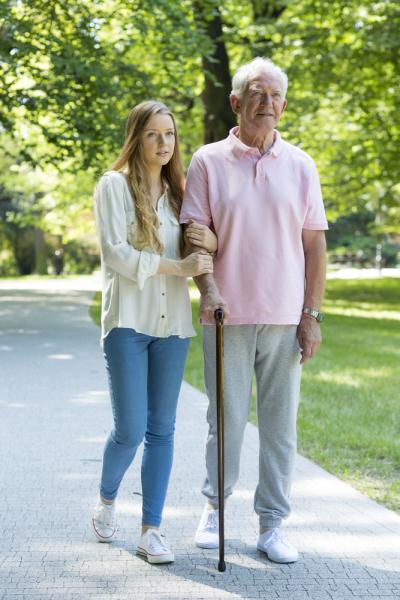Last week I wrote about exercise and the young — now I want to go to the other end of the age spectrum and provide some evidence that not only is physical activity good for older folks, it can even help with rehabilitation.
A major downside to aging for many people is loss of independent mobility. For example, having to be bedridden for an extended period can make it difficult for a person to regain the ability to walk as independently as they might have done previous to their illness. This disability can negatively influence a person's quality of life, and increase the probability of depression and social isolation.
The question of how best to help such individuals regain mobility is the topic of a new report by Dr. Thomas M. Gill from Yale University and colleagues in the Annals of Internal Medicine.
The authors wrote, "Previous research showed that disability, including mobility disability, is a dynamic process, with older persons moving in and out of states of disability" so they investigated the effect that a physical activity intervention could mitigate the burden of major mobility disability (MMD) by both speeding recovery and by decreasing the probability of recurrence. The results of this intervention were compared to those of a health education program, without any activity component.
The participants in this study included men and women between the ages of 70 and 89 years. They were sedentary, but could walk 400 meters (about 1/4 mile) unaided in 15 minutes or less. They were randomly assigned to participate in either an activity intervention, or in a health education program. Those in the activity program were to walk up to 150 minutes per week, and participate in strength, flexibility and balance training.
Every 6 months, participants were evaluated at their clinic — the median follow-up period was a little under 3 years. Among other factors, they were assessed for their ability to walk 400 meters unaided — inability to do so was considered to have a major mobility disability. The researchers evaluated the effect of the activity intervention on both the occurrence of MMD, and transitions into and out of that state.
They found that about 12 percent of the exercise group were categorized as MMD, compared to 16 percent of those in the education only group, and that the MMD burden was significantly reduced by 25 percent compared to the education only group. Importantly, they also found that "the percentages of all transitions from no MMD to MMD and from no MMD to death were greater in the health education than the physical activity group. "
In their discussion, the authors point out that while disability itself can impair quality of life, it doesn't have to portend an inexorable decline in independent mobility. Indeed, they state "mobility disability, especially in older persons, is a dynamic process characterized by frequent transitions between states of independence and disability over time."
These results support an emphasis on exercise as an adjunct to other rehabilitation modalities when a period of immobility is enforced by an illness.




